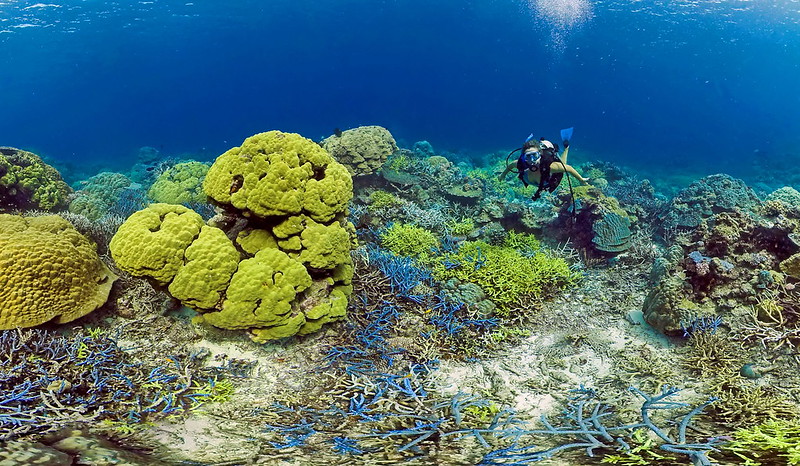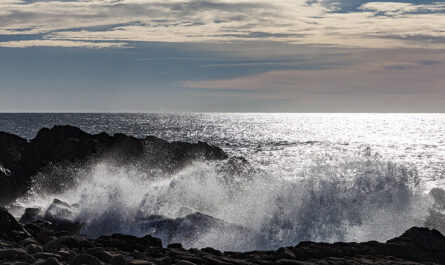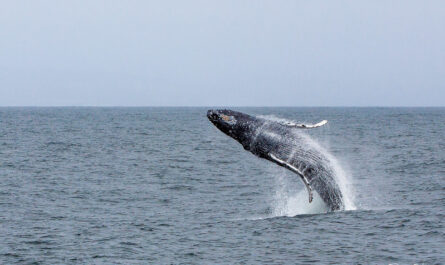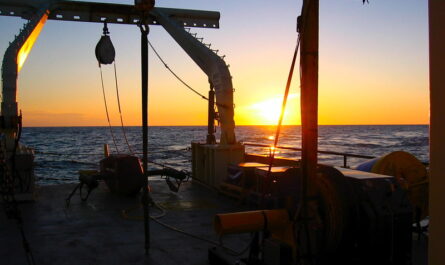Coral reefs are often referred to as the “rainforests of the sea” due to their unparalleled biodiversity and ecological importance. In the Atlantic Ocean, these vibrant underwater ecosystems stretch from the Caribbean Sea to the coasts of Brazil and West Africa, hosting thousands of marine species and providing crucial services to humans and marine life alike. However, coral reefs in the Atlantic face mounting threats, including climate change, pollution, and overfishing, which have intensified the phenomenon of coral bleaching.
This comprehensive article explores the incredible biodiversity of Atlantic coral reefs, the challenges they face, and the innovative efforts being undertaken to prevent coral bleaching and preserve these ecosystems for future generations.
Understanding Coral Reefs
1. What Are Coral Reefs?
Coral reefs are underwater structures formed by the calcium carbonate skeletons of coral polyps, tiny marine animals that live in symbiotic relationships with algae called zooxanthellae. These algae provide the vibrant colors and much of the energy corals need to survive.
- Fringing Reefs: Found close to shorelines, fringing reefs are common in the Caribbean.
- Barrier Reefs: These are located farther from the shore and include famous examples like the Mesoamerican Barrier Reef.
- Atolls: Ring-shaped reefs that form around submerged volcanic islands.
2. The Atlantic’s Coral Reefs
The Atlantic Ocean’s coral reefs are primarily located in the Caribbean Sea, the Gulf of Mexico, and along the eastern coasts of South America and Africa. Major reef systems include:
- Mesoamerican Barrier Reef: The second-largest barrier reef in the world, stretching from Mexico to Honduras.
- Bahamas Barrier Reef: Known for its vibrant marine life and diverse coral species.
- Abrolhos Reef Complex: Located off Brazil, this reef is a biodiversity hotspot with unique coral formations.
Biodiversity of Atlantic Coral Reefs
1. Marine Species
Atlantic coral reefs support a vast array of marine life:
- Fish: Species such as parrotfish, angelfish, and groupers rely on reefs for food and shelter.
- Invertebrates: Crabs, shrimp, sea urchins, and sponges thrive within reef ecosystems.
- Mollusks: Giant clams and various species of octopuses inhabit these reefs.
- Predators: Sharks and barracudas patrol the reefs, maintaining ecological balance.
2. Unique Coral Species
- Elkhorn Coral (Acropora palmata): A critical reef-building species found in shallow waters.
- Brain Coral (Diploria labyrinthiformis): Known for its maze-like appearance.
- Staghorn Coral (Acropora cervicornis): A fast-growing coral crucial for reef restoration.
3. Ecosystem Services
- Biodiversity Hotspots: Coral reefs provide habitat for approximately 25% of all marine species.
- Coastal Protection: Reefs act as natural barriers, reducing wave energy and preventing erosion.
- Economic Importance: Coral reefs support tourism, fisheries, and traditional livelihoods.
Threats to Atlantic Coral Reefs
1. Climate Change
Climate change poses the greatest threat to coral reefs, primarily through:
- Rising Sea Temperatures: Elevated temperatures cause stress to corals, leading to bleaching.
- Ocean Acidification: Increased carbon dioxide levels reduce the availability of carbonate ions, essential for coral skeleton formation.
- Sea Level Rise: Alters light availability, which corals need to thrive.
2. Coral Bleaching
Coral bleaching occurs when corals expel their symbiotic algae due to stress, losing their color and primary energy source. Bleached corals are more susceptible to disease and mortality.
3. Pollution
- Nutrient Runoff: Excess nutrients from agriculture lead to algal blooms that outcompete corals.
- Plastic Pollution: Plastics entangle coral structures and introduce harmful pathogens.
- Oil Spills: Toxic substances disrupt marine life and coral health.
4. Overfishing
The depletion of herbivorous fish, such as parrotfish, allows algae to overgrow and smother corals.
5. Physical Damage
- Anchor Damage: Boats and ships can crush coral formations.
- Tourism Activities: Unregulated snorkeling and diving can break delicate corals.
6. Invasive Species
- Lionfish: An invasive predator that disrupts reef ecosystems.
- Crown-of-Thorns Starfish: Consumes coral polyps, devastating large areas of reef.
Efforts to Prevent Coral Bleaching and Protect Atlantic Reefs
1. Coral Restoration Projects
- Coral Nurseries: Fragments of coral are grown in underwater nurseries and transplanted to damaged reefs.
- Assisted Evolution: Scientists breed corals with heat-resistant traits to enhance their resilience.
2. Marine Protected Areas (MPAs)
MPAs restrict harmful activities like fishing, anchoring, and industrial development, allowing ecosystems to recover.
- Example: The Bonaire National Marine Park in the Caribbean is a model for successful reef protection.
3. Sustainable Tourism Practices
- Eco-Certification: Programs certify operators who adhere to sustainable practices.
- Education and Awareness: Tourists are encouraged to follow guidelines to minimize their impact on reefs.
4. Reducing Pollution
- Agricultural Best Practices: Limiting fertilizer use and implementing buffer zones reduce nutrient runoff.
- Waste Management: Efforts to clean up plastic pollution and prevent oil spills are crucial.
5. Climate Action
- Global Initiatives: Agreements like the Paris Accord aim to limit global warming and protect coral ecosystems.
- Renewable Energy Transition: Reducing dependence on fossil fuels mitigates ocean acidification and warming.
6. Research and Innovation
- Coral Genetics: Genetic research aims to identify and propagate resilient coral species.
- Bioengineering Solutions: Techniques such as artificial reefs provide alternative habitats for marine life.
The Role of Communities and Governments
1. Community Involvement
Local communities are integral to reef conservation:
- Sustainable Fishing Practices: Traditional methods that preserve reef health.
- Citizen Science: Community members monitor reef conditions and report changes.
2. Government Policies
Effective policies include:
- Fisheries Management: Enforcing quotas and seasonal closures to prevent overfishing.
- Pollution Control: Implementing stricter regulations on industrial and agricultural runoff.
3. International Collaboration
Reef conservation requires coordinated efforts across nations:
- Global Coral Reef Monitoring Network: Tracks the health of coral reefs worldwide.
- Funding Mechanisms: International funds support conservation projects in developing regions.
The Future of Atlantic Coral Reefs
1. Challenges Ahead
- Warming Oceans: If current trends continue, many coral species may not survive the next century.
- Political Will: Addressing climate change and enforcing protections require global cooperation.
2. Reasons for Hope
- Technological Advances: Innovations in restoration and monitoring provide new tools for reef conservation.
- Public Awareness: Growing global recognition of coral reefs’ value is driving conservation efforts.
3. Long-Term Strategies
- Integrated Management: Balancing ecological, economic, and social priorities.
- Resilience Building: Enhancing the natural resilience of reefs through targeted actions.
Conclusion
Atlantic coral reefs are jewels of biodiversity, essential for the health of marine ecosystems and human economies. While these reefs face unprecedented threats, the collective efforts of governments, scientists, communities, and individuals offer hope for their survival. By taking decisive action to prevent coral bleaching and address other challenges, we can ensure that these underwater treasures continue to thrive and inspire for generations to come.



